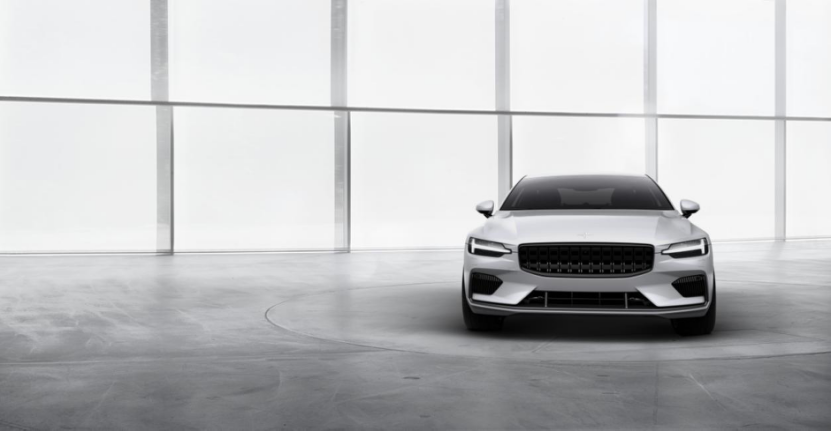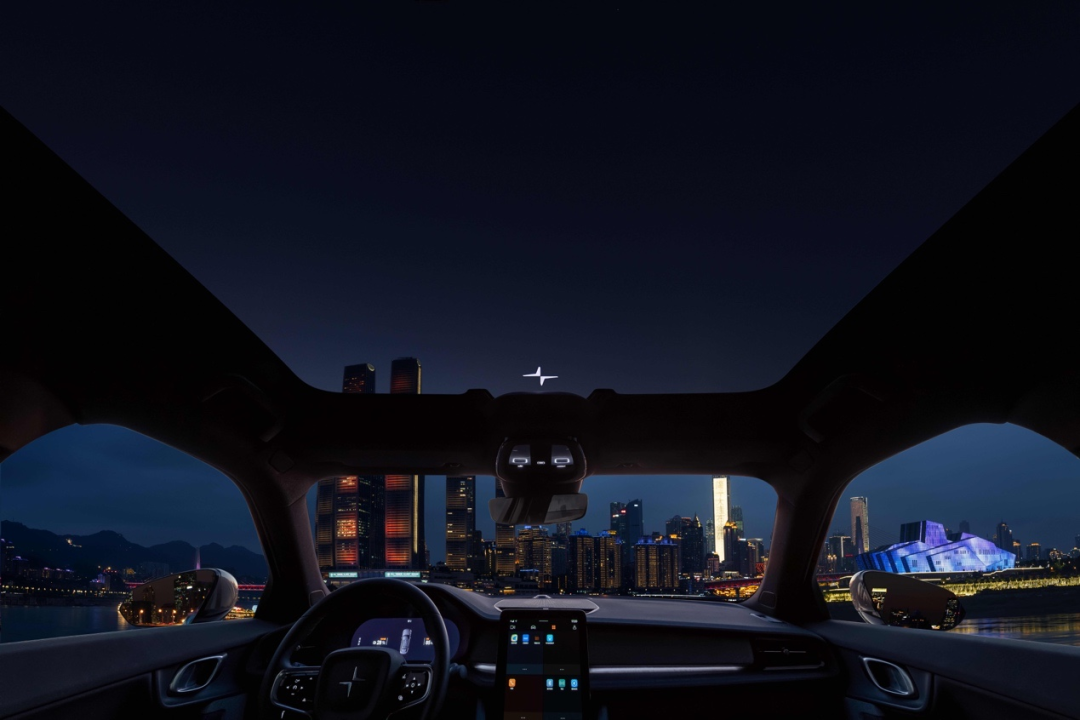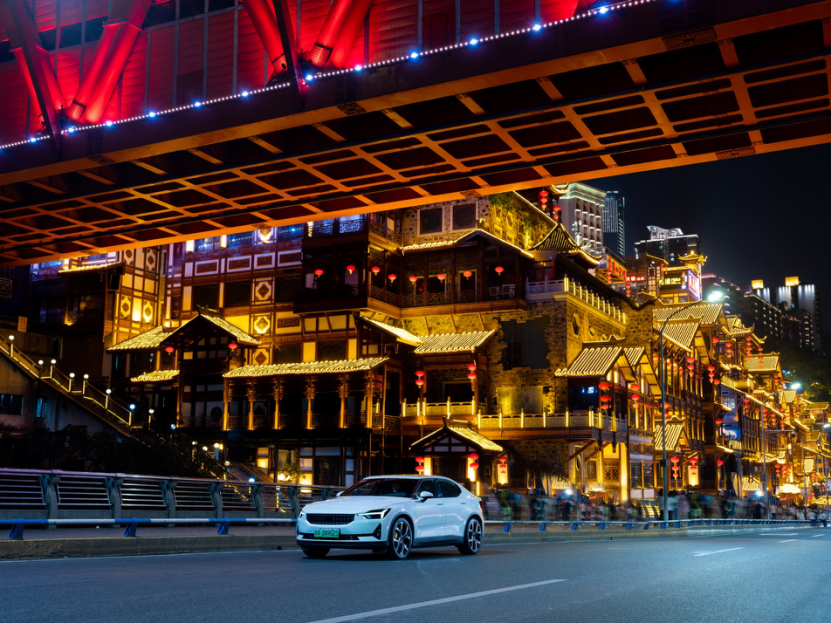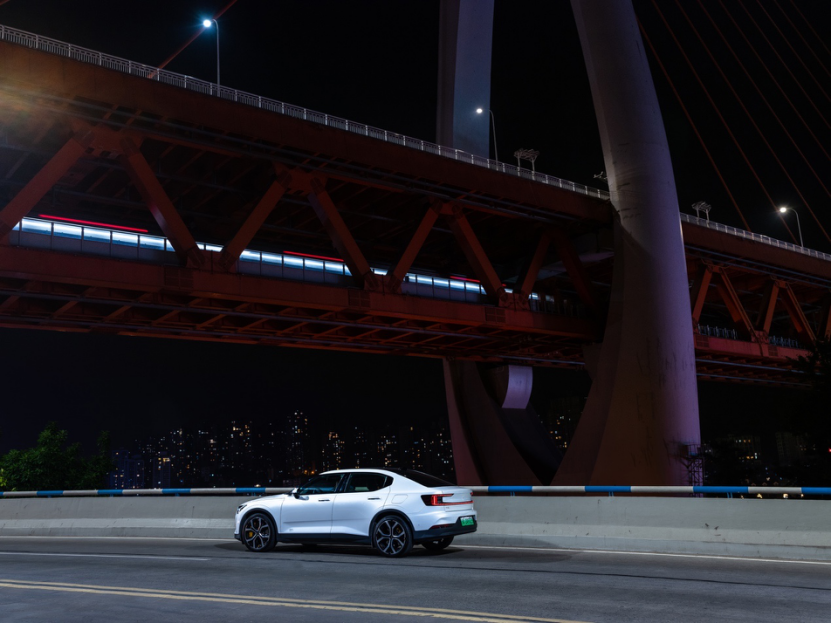This article was originally published on the WeChat account of autocarweekly, written by Joey.
Driving the Polestar 2 in the mountains of Chongqing at night and admiring the scenery of the city, I realized the title of this article.
In the magical city of Chongqing, known for its “I think I’m on the first floor, but I’m actually on the eighteenth floor,” having a car is quite a fortunate thing. And if you can drive a Polestar 2, it is even more of a luxurious driving experience on the city’s up-and-down, winding, and twisting roads. Why do I say that?
Just like Mercedes has AMG and BMW has Alpina, which are specialized tuning departments or brands, Volvo, a luxury car brand known for its safety performance, also has a department dedicated to tuning “safe performance monsters,” and that department is Polestar. Although it is niche, in fact, Polestar is able to give the seemingly mediocre Volvo brand powerful driving pleasure. However, today, Polestar has become an electric car development company called “Polestar 2.”
I have always believed that Polestar is the electric car brand that has grasped the best and most adequate tone. This is inseparable from the early promotion of the “cool” style. The minimalist and elegant style is harmoniously integrated. Walking into a Polestar store gives the illusion of entering an art museum.
This is not just commercial flattery, but something that really happened to me. Now, every time I come to the shopping center near my home, I always want to enter the Polestar store and take a look, even though, due to the influence of the minimalist style, other than a car and a cloth-covered light source on the roof, there is not much else. But you just want to go in and take a look, even if it’s just a glance.
Similarly, the sense of aesthetics is not only reflected in the Polestar store but is also truly present on every Polestar vehicle. In the early stages of manufacturing electric cars, due to the layout requirements of the batteries, pure electric cars were mostly heavy and bulky SUV models (except for Tesla), but Polestar’s first product, the Polestar 1, took the sedan route.
At that time, the Polestar 1’s design, overall proportion, and many small details in the car completely overwhelmed those SUV models in terms of aesthetic taste (of course, the first model was a flagship luxury car priced over one million, and the pursuit of perfection was a must-do assignment).
Nowadays, as leading intelligent pure electric car companies like XPeng and NIO focus on making sedans, the Polestar sedan still keeps its unique and high-end aesthetic in design. Whether it’s the panoramic sunroof that stretches over the entire head, the hollow irregular hexagonal gear lever, the lines full of strength, or even the Thor’s hammer headlights from Volvo, and even the cut style of the car door glass has edges and corners. All these accumulate on the Polestar 2 to highlight its overall coordination, elegance, and sharpness.
Of course, I have not forgotten the beautiful soul with a focus on sports that Polestar possesses. During the test drive, I have tried the single-pedal mode that was controversial some time ago, and also tried the driving mode that simulates the traditional internal combustion engine that makes people dream back to the era of gasoline engines. I also experienced the precise steering and smooth handling tailored with powerful acceleration performance that matches pure electric vehicles. Undoubtedly, the Polestar 2 can be a powerful tool for running on mountain and city tracks.
However, the fact is that the demands of ordinary people for cars are somewhat different from those of performance enthusiasts. They believe that technology is the eternal theme of every new energy vehicle. Polestar 2 is no exception.

In fact, in Chongqing, an 8D magical city, performance is really a niche demand. For many people, especially newcomers from other places, “finding the way” is the eternal theme. Based on such an urgent need, Polestar 2 has cooperated with Amap to customize a map application specifically for new energy vehicle users.
In addition to common intelligent route planning and celebrity voice functions, this map application also allows users to synchronize their Amap accounts, achieving synchronization of information between mobile phones and car machines. During night test drives, the Amap map application automatically opens the night mode to avoid disturbing users, making driving safer. On complex roads, Amap will automatically enable the 3D panorama function.
Of course, I have to say that this car-mounted map application has indeed saved me from worrying about getting lost at all times.
 The large screen on the Polestar is not just for navigation. They have collaborated with Huawei to create an Android-based in-car system that supports installing numerous apps and even mini programs, making the driving experience more convenient and personalized for users. In the future, based on the compatibility features of Huawei’s HarmonyOS which supports Android apps, Polestar does not rule out the possibility of adopting HarmonyOS. Clearly, this flexible and versatile ecosystem is conducive to the use of unified environmental solutions for future products.
The large screen on the Polestar is not just for navigation. They have collaborated with Huawei to create an Android-based in-car system that supports installing numerous apps and even mini programs, making the driving experience more convenient and personalized for users. In the future, based on the compatibility features of Huawei’s HarmonyOS which supports Android apps, Polestar does not rule out the possibility of adopting HarmonyOS. Clearly, this flexible and versatile ecosystem is conducive to the use of unified environmental solutions for future products.
Of course, driving is the most important aspect of a car. In the narrow mountain roads of Chongqing city, you will encounter many situations where you must meet oncoming and following cars. For today’s trend of brighter headlights, these scenarios often become unsafe factors for night driving. Therefore, the development of the Pixel array headlight technology aimed at ensuring safety through technology has appeared.
The Pixel array headlights consist of 84 LED light sources, arranged in three rows of dots, making it possible to have more flexible angles and ranges of illumination. Via camera detection, the vehicle can detect oncoming vehicles’ situations and adjust the illumination angles and distances of 84 LED light sources, so that they do not directly illuminate vehicles that may be affected by strong light or glare, which can reduce the potential for accidents. The system can recognize up to five vehicles, and this can greatly improve the safety factor for both the driver and other surrounding vehicles during nighttime driving.
Polestar 2’s safety technology derived from Volvo is more than just the Pixel headlights mentioned above. It also includes the Pilot Assist navigation assistant system supported by three radars, 12 millimeter-wave sensors and five cameras. Unlike today’s efforts from other brands in achieving intelligent and even autonomous driving technologies, Volvo still hopes that drivers can have full control at L2 level. Therefore, whether it is emergency braking, lane keeping or following, it all needs to be achieved under safe conditions with the ability for complete control at any time. Regarding this point, I fully agree because compared to individual smart bikes, intelligent travel that combines cars, roads and cities shows more promise for the characteristics of intelligent driving in the future.# The Polestar 2 – A Fusion of Driving Performance, Innovative Design and Robust Technology
The Polestar 2 is an electric car that combines driving performance, innovative design and robust technology. Overall, it has not exceeded people’s expectations too much. However, the Polestar 2 still faces the problem of compressed interior space due to the battery, which leads to cramped headroom for passengers. But if you truly grasp the steering wheel, these small flaws can be completely ignored.
After all, a car that looks so good, handles so well, and does not have any obvious shortcomings in all aspects, is clearly enough to meet the needs of more people. And for people in Chongqing, if there is a standard car, then having a Polestar 2 is really like having a high-end model.
This article is a translation by ChatGPT of a Chinese report from 42HOW. If you have any questions about it, please email bd@42how.com.
